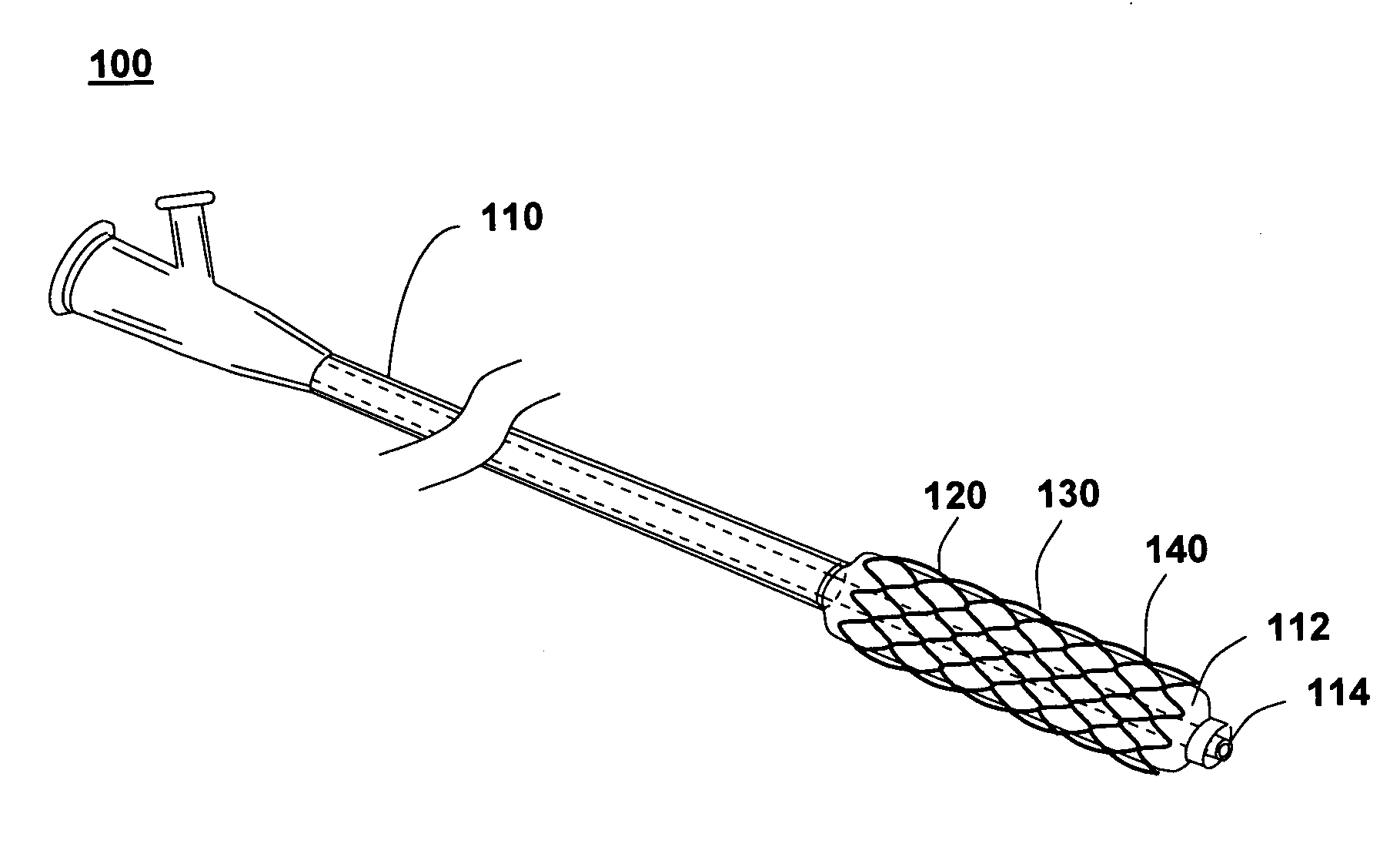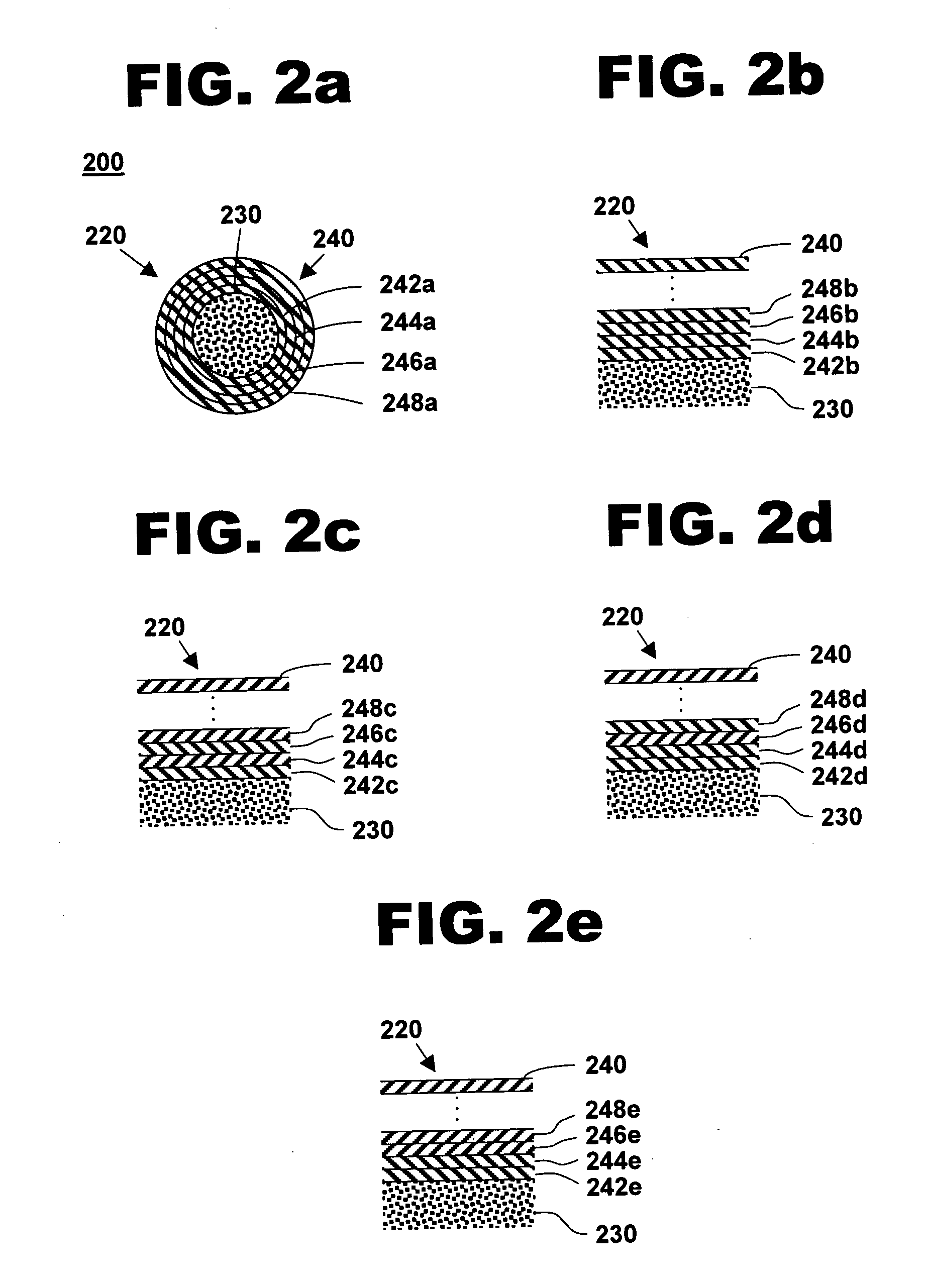Laminated drug-polymer coated stent with dipped and cured layers
- Summary
- Abstract
- Description
- Claims
- Application Information
AI Technical Summary
Problems solved by technology
Method used
Image
Examples
Embodiment Construction
[0030]FIG. 1 shows an illustration of a system for treating a vascular condition, comprising a drug-polymer coated stent coupled to a catheter, in accordance with one embodiment of the present invention at 100. Vascular treatment system 100 includes a drug-polymer coated stent 120 coupled to a delivery catheter 110. Drug-polymer coated stent 120 includes a stent framework 130 and a laminated drug-polymer coating 140 disposed on the stent framework. Laminated drug-polymer coating 140 includes a plurality of thin drug-polymer layers. The drug-polymer layers include a therapeutic agent and a cured first polymer. Laminated drug-polymer coating 140 may include at least one thin barrier layer positioned between one or more thin drug-polymer layers. The barrier layers include a cured second polymer and may also include a second therapeutic agent. The constituents of coated stent 120 are selected to provide a pre-determined drug-release profile.
[0031] Insertion of coated stent 120 into a v...
PUM
| Property | Measurement | Unit |
|---|---|---|
| Fraction | aaaaa | aaaaa |
| Fraction | aaaaa | aaaaa |
| Weight | aaaaa | aaaaa |
Abstract
Description
Claims
Application Information
 Login to View More
Login to View More - R&D
- Intellectual Property
- Life Sciences
- Materials
- Tech Scout
- Unparalleled Data Quality
- Higher Quality Content
- 60% Fewer Hallucinations
Browse by: Latest US Patents, China's latest patents, Technical Efficacy Thesaurus, Application Domain, Technology Topic, Popular Technical Reports.
© 2025 PatSnap. All rights reserved.Legal|Privacy policy|Modern Slavery Act Transparency Statement|Sitemap|About US| Contact US: help@patsnap.com



